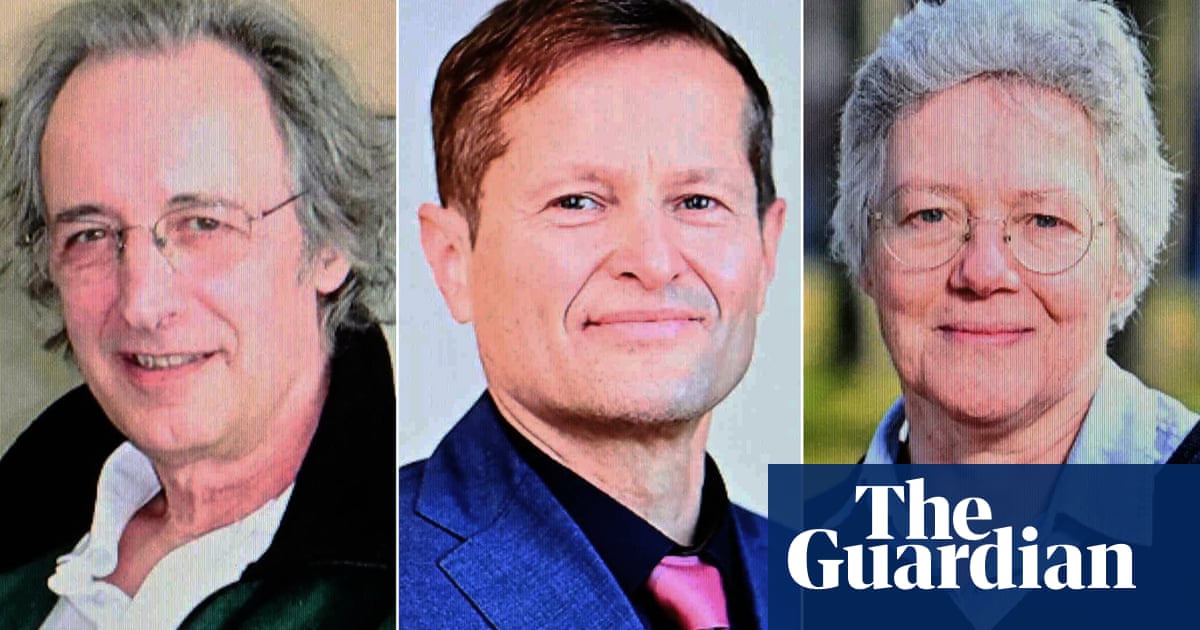
STOCKHOLM/BERLIN (Reuters) - Three scientists who unravelled some of the deep mysteries of black holes, the awe-inspiring pockets of the universe where space and time cease to exist, have won the 2020 Nobel Prize in Physics.
Britain’s Roger Penrose, professor at the University of Oxford, won half the prize of 10 million Swedish crowns ($1.1 million) for his proof that black holes are a direct consequence of Albert Einstein’s general theory of relativity.
“It was an extreme honour and great pleasure to hear the news this morning in a slightly unusual way - I had to get out of my shower to hear it,” Penrose told reporters from his home in Oxford on Tuesday.
German Reinhard Genzel, of the Max Planck Institute and University of California, Berkeley, and Andrea Ghez, at the University of California, Los Angeles, shared the other half for discovering that an invisible and extremely heavy object governs the orbits of stars at the centre of our galaxy.
Ghez - only the fourth woman to be awarded the Physics prize after Marie Curie in 1903, Maria Goeppert-Mayer in 1963 and Donna Strickland in 2018 - said she hoped it would inspire others to enter the field.
Asked about the moment of discovery, Ghez said: “The first thing is doubt.”
“You have to prove to yourself that what you are really seeing is what you think you are seeing. So, both doubt and excitement,” the 55-year-old American said in a call with the committee after receiving the award.
Genzel was on a Zoom call with colleagues when the phone rang. “Just like in the movies, a voice said: ‘This is Stockholm’,” the 68-year-old astrophysicist told Reuters Television in his cluttered office on the outskirts of Munich.
He was flabbergasted by the news: “I cried a little bit.”
WHERE TIME ENDS
Scientists have wondered since the 18th century whether any object existed in the universe that would exert a gravitational pull so strong that light may not be able to escape.
Einstein predicted in 1915, in his general theory of relativity, that space and time could be warped by the force of gravity. Yet he did not actually believe in black holes, and finding a way to prove their existence baffled scientists for another 50 years.
It was not until a seminal paper in 1965 that Penrose proved that black holes can really form - describing them in detail and stating that, at their centre, there is a singularity where time and space cease to exist.
Illustrating Penrose’s insight at the awards presentation in Stockholm, Ulf Danielsson of the Nobel Committee held a black ball the size of a grapefruit in one hand and pointed at it with the finger of his other hand.
At the ball’s edge, time stands still, Danielsson said, and as his finger pushed into it, its tip moves into the future.
It would be impossible to withdraw one’s finger without tearing it apart. Instead it would be “carried all the way into the centre of the black hole, where time ends and the known laws of physics cease to apply”.
Asked by Reuters what was the biggest riddle about black holes, Penrose said: “The greatest puzzle is the singularities, because we don’t know what to do with them: You see the black holes shield us from the singularities.”
Penrose, 89, had no complaints about being recognised late in life: “It’s a good thing to get it good and old, before you’re absolutely clapped out,” he said. “Don’t get it too early - that’s my advice.”
He also paid tribute to celebrated British theoretical physicist Stephen Hawking, who died in 2018, saying he deserved to win a Nobel prize for his own work on black holes.
‘AWE-INSPIRING’ MYSTERY
Subsequent efforts to find a black hole focused on the clouds of dust in a region of the Milky Way called Sagittarius A*. Using the world’s largest telescopes to observe how stars orbited, separate teams led by Genzel and Ghez concluded that around 4 million solar masses are packed into a region the size of our solar system.
“Penrose, Genzel and Ghez together showed us that black holes are awe-inspiring, mathematically sublime, and actually exist,” said Tom McLeish, professor of natural philosophy at Britain’s University of York.
Physics is the second of this year’s crop of Nobels to be awarded, after three scientists won the medicine prize on Monday for their discovery of Hepatitis C.
The Nobel prizes were created in the will of Swedish dynamite inventor and businessman Alfred Nobel and have been awarded since 1901.
This year’s awards are taking place under the long shadow of the COVID-19 pandemic that has curtailed much of the usual festivities surrounding the prizes. ($1 = 8.9108 Swedish crowns)












